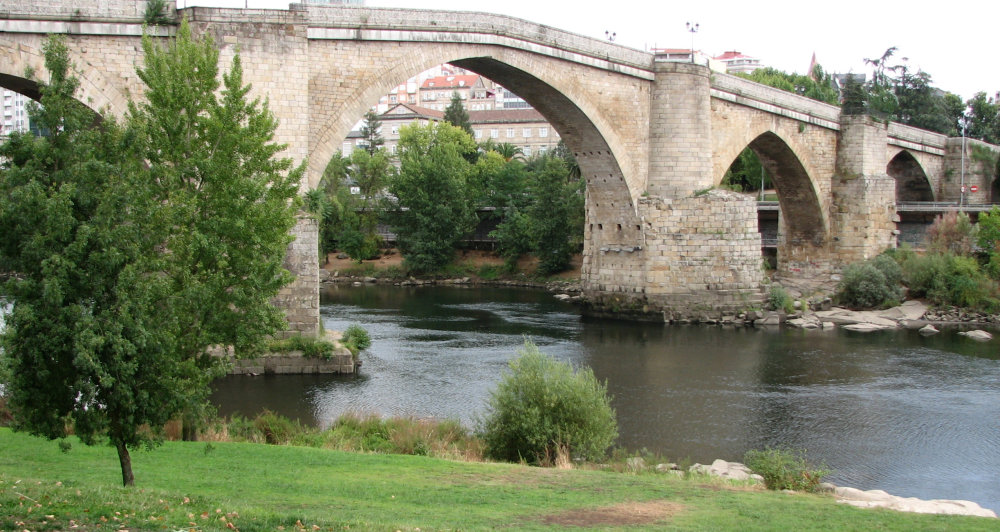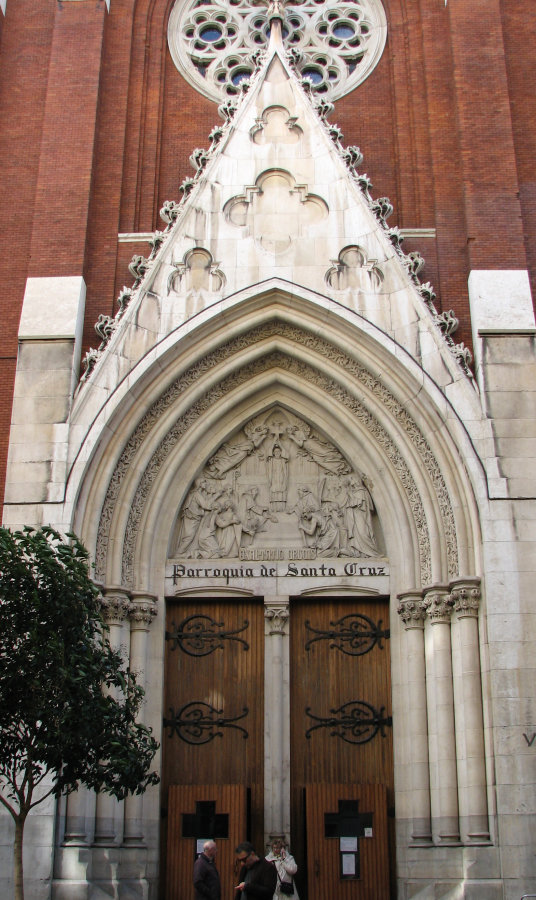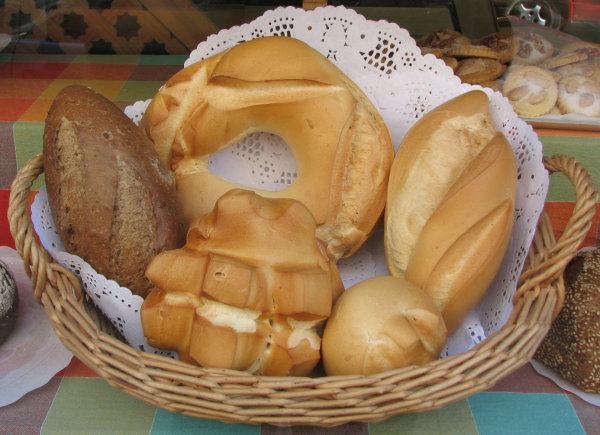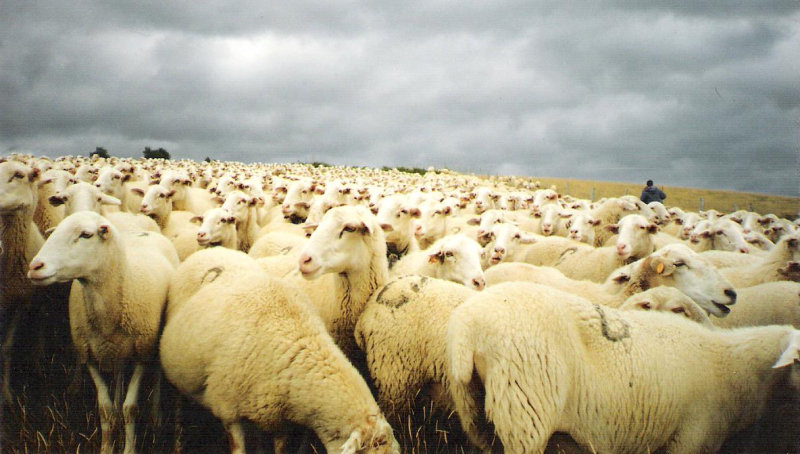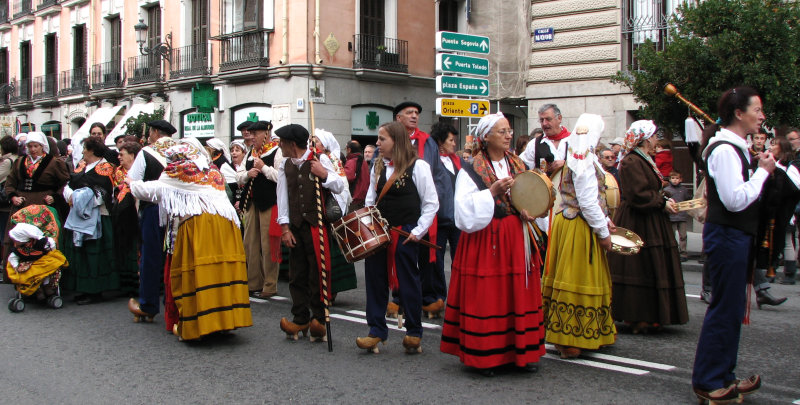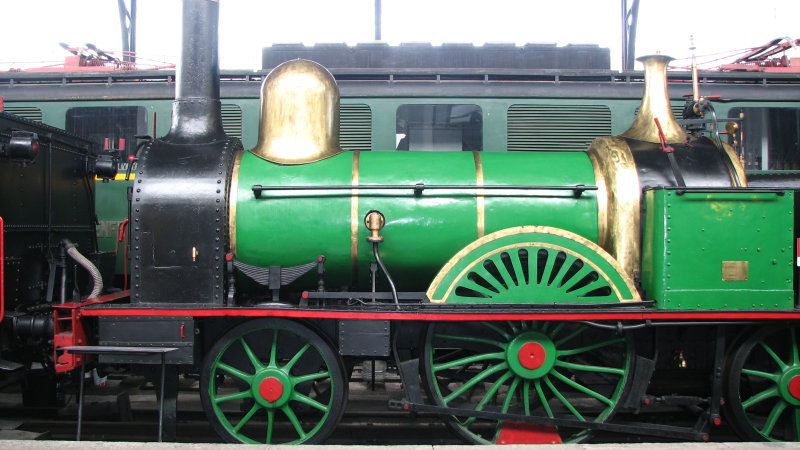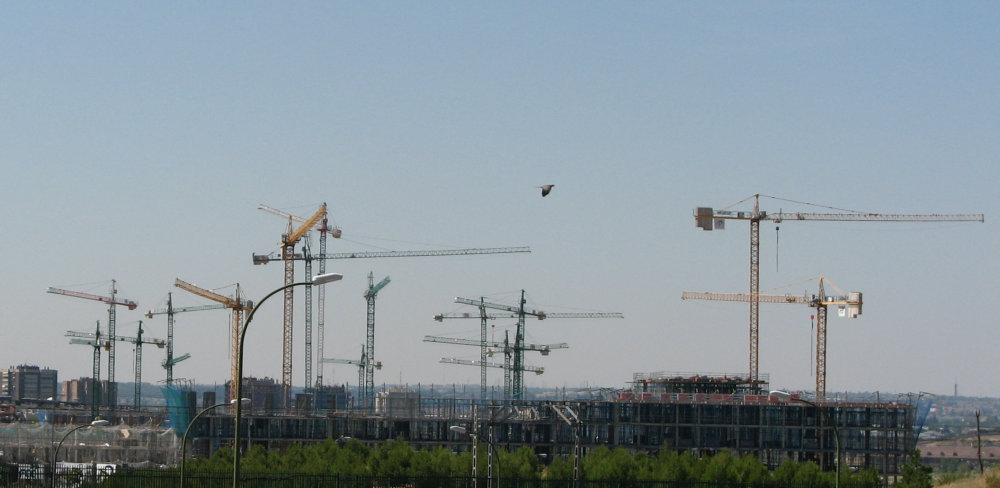As a long-time expat, I frequently get questions from newer arrivals about things that have happened in Spain during my time here.
Eventually I will post a summarized, personal history, perhaps including what led me to try a breakfast sol y sombra (usually only for crusty old men or tough working guys) or a bit about my bohemian attic apartment.
But for now, I’d like to share something about the 2004 train bombs in Madrid. This piece was written immediately after the attacks to explain the situation to concerned family and friends, especially for people reading articles in the international press, many with an inaccurate “spin”. I have not changed anything in this piece (except correcting a few typos), though it was tempting. But I wanted to leave it as a historical reflection on a major event in recent Spanish history.
As always, when learning about tough or unfamiliar issues, it is a good idea to read from a variety of sources and know who is writing and where they’re coming from. Please read other sources to balance what follows, which tries to be fairly unbiased person-in-the-street account — but doesn’t always succeed.
Where the “press” is cited, it is usually the major daily newspaper EL PAIS or sometimes the Yahoo news services, which select articles from most of the world news services.
Summary of situation: Train bombs went off in Madrid on March 11, just three days before the national elections of March 14, 2004.
Thursday, March 11, 2004: At about 7.40 – 7.45 AM bombs went off on four different commuter trains: one in Atocha station, one just outside Atocha station, one in Santa Eugenia station and another in the commuter stop El Pozo del Tio Raimundo. Several trains had more than one bomb. All the trains were on the Guadalajara – Alcalá de Henares – Madrid Atocha train line, very heavily traveled at that time of day with workers coming into the city from outlying areas.
Atocha station, where two of the attacks occured, is the main commuter station in Madrid’s heavily used commuter train system, with ten platforms running trains about every 3 minutes, connections to the subway and nearby connections to city bus lines.
That first day, the deaths were counted at more than 180; later the toll would rise to 201 and finally return to 191 once all the DNA testing was complete. There were more than 1800 injured.
As usual, the first assumption was that the attacks had been commited by ETA, the Basque terrorist group. But from the very beginning there were indications that ETA was not responsible: the attack was not their “style” (too indiscriminate, no advance warning, wrong kind of victims), and the controlled explosion of a bomb that did not go off seemed to indicate a type of explosive that ETA does not use. Furthermore, the head of the illegalized political party associated with ETA condemned the attacks, something they had never, ever done after an ETA attack. He went so far as to state categorically that it was not ETA and suggest the possiblity of an Islamist fundamentalist attack. To people outside Spain, this may not sound important. To people in Spain who know ETA’s usual style, this is a very important point.
On the morning of that first day a white minivan was found near the train station in Alcalá de Henares, containing some clothes, detonator caps, remains of an explosive and a Koran tape in Arabic; a witness had seen three people in the van early in the morning and later remembered them because they were wearing face masks that seemed too warm for the weather. One of the people headed for the train station carrying a backpack or large sports bag of some sort.
Thursday evening, an unexploded bomb was discovered in a sports bag in a police station. The bag was collected at one of the bomb sites as belonging to a victim and was discovered when a cell phone began to ring. The alarm clock function of cell phones was the detonating mechanism for the other bombs; for some reason bomb didn’t go off in the morning nor in the evening. The type of explosive and the way the bomb was put together became important clues for the police investigations.
More and more things seemed to point away from ETA. In a memo to the Basque press the organization denied any participation in the attacks. However, about 5.30 PM the Spanish Department of State sent a circular to Spanish ambassadors world-wide stating that ETA was the prime suspect. The government (Partido Popular or “PP”, center right) continued to maintain that ETA was suspect number one, though other clues were also being investigated, for several more days.
Almost immediately after the morning attacks, all of the final political campaign acts for Sunday’s elections were canceled. Politicians across the spectrum started calling for all voters to participate in the elections, some adding qualifying statements like: vote, but don’t let the attacks change your vote; vote, for yourself and for those who no longer can.
Some comments suggested that it would have been wise to postpone the elections until people had calmed down and the perpetrators were clear. But according to experts quoted in the Spanish press, the Constitution has no mechanism for postponing a general election in this kind of situation, without declaring a state of emergency. An even more convincing argument was that postponing the election would give the wrong message to the terrorists and to the world.
Friday, March 12: Memorials began springing up at bomb sites. Mass demonstrations against terrorism drew more than 11 million people in all the provincial capital cities; that about 25% of Spain’s population of about 41 million people.
The PP government continued to insist that ETA was suspect number one, though they admitted other possibilities were also being investigated.
Saturday, March 13, “Thinking day”: On the day before elections in Spain, no political acts are allowed. This is the day people should digest all the information they have received during the campaign, and if they haven’t already decided their vote, make their choice.
In addition to evaluating Spain’s progress in the previous four years and all the campaign promises, people now wanted to know as much as possible about the attacks to factor in that information and cast their vote for the government that would lead Spain for the next four years. Basically, if ETA committed the attacks, people might lean more towards the PP, as that party had achieved some important victories in the fight against Spain’s own terrorist group. But if the attacks were committed by an Islamist terrorist group, people might tend not to vote for PP, believing that PP support of the Iraq war had brought Islamist terrorism to Spain.
That said, it should also be emphasized that Spanish participation in the Iraq war was not the only issue in the campaign, nor even the most important issue. The attacks brought the war back to center stage, and reminded voters that the PP government had supported the war against massive public opinion, never really giving a solid explanation of the reasons for that decision.
The attacks were awful but probably did not determine most people’s votes. However, the attacks did bring certain issues to the attention of the voters. One issue was the Iraq war. Another issue is the people’s right to receive timely and correct information from their government.
In the aftermath of the attacks, a lot of people saw a dynamic that the ruling party “Partido Popular” had used in the past: controlling or manipulating information that the Spanish people felt they had a right to know. As well as the Iraq war, timely access to information was an issue during important crisis like the Prestige oil spill in northwest Spain and the plane crash that took the lives of 60 Spanish military returning from a peacekeeping mission in Afghanistan. Some people might say that controlling information was an ongoing policy of the PP government, not just in times of crisis but on a daily basis.
Even given the need to maintain some discretion in the first stages of an investigation, people wondered if PP might not be acting in their own best interest by insisting on the ETA theory and not informing the people of the progress of the investigation of the Islamist clues. All this came to a head on the day before an election, an election that would decide what party would govern Spain for the next four years.
Even without the attacks, 2004 – 2008 was going to be difficult: social and environmental issues in Spain, a new phase for the EU, a tough global situation. Add the need for healing after a major terrorist attack and the importance of the elections becomes even greater. And the importance for voters to feel they were making the best possible choice even more apparent.
On Saturday at about 4.00PM, five men were arrested, three from Morocco and two from India. These arrests were made possible by following the clues given by the unexploded bomb discovered on Thursday. Early in the evening, a caller notified the local television station that a video tape would be found in a trash can near the mosque and the city funeral home; that video claimed responsibility for a group affiliated to Al Qaida. Though it would take some time to check the authenticity of the video, the case for an Islamist fundamentalist attack was beginning to look very strong.
Most people feel that the PP government took an unusually long time to announce these new leads. Under pressure, they finally made an official announcement around 8.00 PM, long after the press and the major opposition party (PSOE, Partido Socialista Obrero Español, center-left) knew about the information. Some cynics say that the PP would have liked to keep that information quiet until after the elections.
It had also turned out that the explosive used was not the kind that ETA always uses, something so typical of that terrorist group that it is considered part of their “style”. According to EL PAIS newspaper, the information about the kind of explosive used was apparently misrepresented to the German intelligence service and police force, who later expressed their indignation at what appeared to be a lack of cooperation between European police forces.
In the meantime, the citizens of Madrid had heard about this new information and congregated in front of the PP headquarters on Genova street. Chanting “manipulation of information” and “we want to know the truth before we have to vote”, this group grew all afternoon and later reappeared at 12 midnight in the centrally located Puerta del Sol, from where they returned to the PP headquarters to continue calling for the truth.
This was apparently a true spontaneous demonstration, organized by internet and cell phone messages and not a “political concentration” called by the PSOE as the PP claimed. That may not sound very important, but for a political party to call a demonstration on “thinking day” was very serious indeed; thus it is an important distinction. PP accused the PSOE of organizing the demonstration, which PSOE vehemently denied.
As another part of this protest was a round of pan-beating, a noisy, low tech but very satisfying way to express an opinion, if participating in a street demonstration is not a viable option. Originally called in Barcelona, the pan-beating spread like wildfire across the country and in some places went on for a long time. In some neighborhoods, not a sound was heard. My street was cacophony, as was the multi-cultural Lavapies area where some of the day’s arrests had been made.
Sunday, March 14, election day: The front page of most of the newspapers had huge headlines about Saturday’s arrests and the video tape. In EL PAIS newspaper, some foreign journalists working in Spain reported having received telephone calls from the government informing them that the attacks were work of ETA, citing reasons that were incorrect. Some newspapers also carried yet another denial by ETA of their participation in the attacks.
The PSOE (Partido Socialista Obrero Español, center-left, opposition party until the elections) won the elections by popular vote and has the largest block in Congress but not the absolute majority. The PP (Partido Popular, center-right, ruling party until the elections) is the second party, with a strong minority. Compared to the 2000 election, it is interesting to note that the 2004 results show the PP only lost about 693,000 votes, while the PSOE gained about 2,989,000 votes.
Some of the PSOE gain might have been former PP voters, but most was probably from people who did not vote in 2000, which had one of the lowest voter turnouts since 1977, Spain’s first election after Franco’s death. Some of those people had probably already decided to vote before the attacks, unhappy with the way the PP was handling important issues. Other people may have decided to vote immediately after the attacks, as a way of supporting the democratic process and protesting against terrorism. Still others may have decided to vote based on the way PP handled the aftermath of the attacks. It is doubtful that many (if any) made that important decision based on fear.
In the period right after the elections, some international press and some groups in Spain claimed that the attacks changed the results of the elections and insinuated that the election result was somehow invalid or that the Spanish people voted out of fear instead of with their heads.
That analysis is not fair to Spanish voters, who are quite capable of making their choices based on mature analysis of multitude of factors and not just based on one isolated event, as tragic as it may be. The voters acted not out of fear of terrorism but in legitimate exercise of their democratic rights, voting out a government that no longer represented the majority opinion.
Information published several days after the elections seem to support this analysis. The very last polls (taken too close to the elections for the results to be published) showed very little lead for the PP. In a poll taken after the elections, voters were asked specifically whether the attacks changed their vote. Ninety percent claimed they had already decided before the attacks occurred.
The polls published before the attacks indicated that the center-right Partido Popular (PP) would probably win the popular vote and have the most seats in Congress, but would lose their absolute majority of 2000-2004. The polls suggested that the second major party, the center-left Partido Socialista Obrero Español (PSOE), would continue to have a strong minority block. The other minor parties, including regional parties and a leftist coalition, would continue more or less as usual, with a minority of seats but as important allies for passing legislation if no party has the absolute majority.
But most of the polls stated that the undecideds, the new voters and especially the people who don’t always vote would be crucial in the outcome of the 2004 elections. That appears to be what happened. Based on information from the Monday edition of EL PAIS, voter participation was 77.22%, up from 68.71% participation in the 2000 elections.
Another factor that may have given the PSOE some votes, without taking any away from the PP, is what Spaniards call the “useful vote”. People who do not really share the ideology of the major parties (PP or PSOE) face a tough choice: vote for a minor party that does express their ideology but has little or no chance of making a difference in Congress, or vote the major party that is the closest to their ideology just to make sure that party has more seats than the other major party. In the 2004 elections, the leftist coalition Izquierda Unida (IU) lost four seats. That coalition is PSOE’s natural ally on many issues and some IU voters may have chosen to vote the “useful vote” this year: PSOE.
The final makeup of the 2004 – 2008 Congess is 164 seats for PSOE, 148 for PP and the remaining 38 seats spread among ten smaller parties (in 2000 – 2004 it was 183 PP, 125 PSOE and 42 for minor parties). Generally speaking, in Spain the members of Congress are expected to vote their party line and not their individual opinions; thus the importance of the makeup of the legislature.
The PSOE leader, Jose Luis Rodriguez Zapatero (often called just Zapatero in the press) has said that he will not form a permanent coalition with any party to reach an absolute majority, a tactic the PP used in the 1996 – 2000 legislature when they did not have the absolute majority. Instead, Zapatero has said he will try to govern by consensus, looking for support among the minor parties when it is needed, depending on the issues being discussed. That may be a little clumsy for passing difficult legislation, but could also be considered a more pluralistic system that guarantees more points of view will be heard.
Soon after the elections, voices were raised supporting the PSOE and their plans for Spain. But the PSOE has also been reminded, by the people who voted them in, that they can also be voted out if they do not fulfill their promises. Crowds of young people chanted: “don’t fail us, don’t fail us”.
Quite conscious that democracy works just like that, the PSOE has promised to do the best they possibly can. The issues are tough. The people will be watching. PSOE has four years to prove they can do the job.
Where does Spain go from here?
A personal reflection from shortly after the attacks: In the time after the attacks, I was very proud of Spain’s solidarity. The volunteer effort was amazing: huge lines of people waiting to donate blood. Neighbors to the bomb sites taking down blankets, water and food, for the victims and the rescue squads. People taking the injured to hospitals in their cars. Taxi drivers offering free service to the families of the dead and injured. A hotel owner offering his establishment for families of dead and injured. Doctors and rescue personnel of all sorts reporting for work while off-duty, or staying on after the end of their 24-hour service. Not to mention the massive peaceful demonstrations, memorial sites and banners expressing people’s feelings.
Especially wonderful to see (for an expat who occasionally gripes about Spain’s lack of organization) was the excellent emergency relief plan. It was in place and worked like clockwork, coordinating all sorts of details including getting information to families as to in what hospital the injured were located. Websites and reinforced emergency phone numbers were fully functional within hours of the attacks.
As tragic as this event was, it is final proof that Spain has come of age as a modern, democratic country.
Afterword: please remember that this was written ten years ago. Many, many things have happened in Spain since then. But I wanted to leave this as a historic document to try to give the immediacy of that tragic event.

